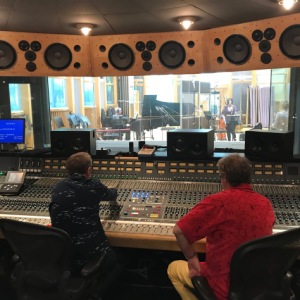Good question!
We audiophiles can get highly excitable whenever there’s talk of laying our hands on a master tape, which we imagine to be some kind of holy grail… the original, the one and only (“to think that George Martin, maybe even John Lennon, will have actually touched this…”).
But is it what we think it is?
Well, yes and no. The term ‘master tape’ can refer to a number of different things so let’s just briefly attempt to clear up a couple of common master tape misunderstandings.
The first generation

When an album is recorded on analogue tape, whether in the studio or on stage, it will either be a multi-track recording using several microphones and/or different sessions to record each individual element separately (instruments, vocals), or a live or semi-live recording in which one or several microphones capture the performance as a whole. The recording engineers will then bring the various elements together, editing and mixing them to achieve the desired sound, culminating in the album’s first final arrangement. This is the original studio master tape, also called the ‘first generation’.
In some cases the recording engineers may connect two or more tape recorders to the desk for the final mix-down so that more than one original, first generation masters are made simultaneously. One of these (or possibly more, in the case of the really big artists) would then typically be kept in storage for safe keeping by the record company/copyright owner.
The second generation
Alternatively, if only a single original, first generation master is made, this will then usually be immediately copied to provide several safety or back-up copies. Here’s where things can get slightly confusing because, strictly speaking, these copies are second generation and yet they’re still often referred to as the ‘original’ masters.
Back in the day when analogue recording was the norm these so-called ‘original masters’ were then used as the blueprints for all subsequent copies, pressings and remasterings, etc – whether to open reel tape, vinyl LP, cassette tape or even CD. Loan copies were sent around the world to licensees, overseas distribution subsidiaries and pressing plants to cut albums from in various formats.

So the ‘master tapes’ sent off for copying and distribution were typically second (or even third) generation copies, and were referred to as production masters, distribution masters or working masters.
Meanwhile the ‘true’ original master remained safely stashed in the vaults!
First, second or third…?
Frankly I wouldn’t get too bent out of shape about any of this, since all of these master copies were made in the best studio conditions and so they can be virtually identical to the original masters. And certainly they’re massively closer to the original recording than any vinyl LP could ever be!
That said, clearly with each subsequent copy taken from a master, something of the original information may be lost and so we could argue that nothing sounds quite like the true, original studio master tape – it’s the most faithful source of the album in its completed state. But unless you’re about to break into the vaults at Abbey Road Studios or Sony Corp, in most cases you’re probably going to have to let that one go…
Still, a master tape, whether first, second or third generation, will outperform any other source, simply because it IS the source for other formats and versions.

A caveat
Right now you might be feeling the urge to write in and tell us we’ve got this all wrong. The thing is, it’s not totally cut and dried and there are exceptions and variations to all of the above. Here’s our advice: if you’re negotiating a ‘master tape’ purchase and want to get clear on precisely what you’re looking at and what it’s worth to you… ask lots of questions.